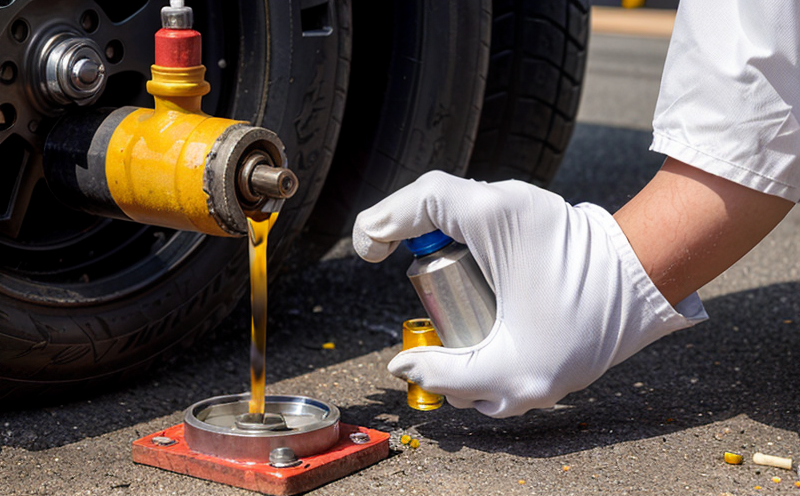ASTM D664 Acid Number Testing of Lubricants
The ASTM D664 standard method is a critical procedure used to determine the acid number (AN) of lubricating oils and other petroleum products. This test measures the amount of acidic compounds present in these fluids, which can indicate their quality and potential for degradation. Acid number testing is essential for ensuring that lubricants meet specified performance criteria and remain effective over time.
The process involves titrating a sample of the lubricant with a standardized potash solution until neutralization occurs. The volume of potassium hydroxide (KOH) required to neutralize the acidity provides an indication of the acid number, which is reported as milligrams of KOH per gram of sample. This measurement helps in assessing the stability and condition of the lubricant.
Understanding the role of acid number testing is crucial for quality managers, compliance officers, R&D engineers, and procurement specialists who ensure that lubricants meet the required standards. By monitoring this parameter, they can prevent potential issues such as increased wear on machinery or premature failure due to acidic degradation.
In marine applications, where reliability and longevity are paramount, accurate acid number testing ensures that equipment operates efficiently under harsh conditions. This service supports the maintenance of high-performance lubricants necessary for optimal vessel operation.
The ASTM D664 test is particularly important in environments like maritime and naval sectors, where stringent quality control measures are essential to avoid downtime and costly repairs. The procedure aligns with broader industry standards aimed at enhancing operational efficiency and safety.
Why It Matters
The importance of ASTM D664 acid number testing cannot be overstated in the context of marine & ship equipment testing, especially for fuel, oil, and lubricant quality assurance. Here’s why this test is critical:
- Predictive Maintenance: Monitoring acidity levels helps predict when maintenance or replacement might be necessary.
- Equipment Protection: Ensuring lubricants have an acceptable acid number can prevent corrosion and wear on metal components.
- Operational Efficiency: Stable lubricants contribute to the smooth operation of machinery, reducing the risk of breakdowns.
- Environmental Compliance: By using high-quality lubricants that pass acid number tests, operators comply with environmental regulations.
The results of this test provide actionable insights for quality managers and engineers responsible for maintaining marine equipment. Accurate data from ASTM D664 testing supports informed decision-making processes in procurement and maintenance schedules.
Applied Standards
| Standard | Description |
|---|---|
| ASTM D664 | This standard specifies the procedure for determining the acid number of lubricating oils and other petroleum products. |
| ISO 25828:2012 (IDT ASTM D664) | An international equivalent that provides a similar method but with slight variations in some procedural details. |
| Sample Preparation | Results Interpretation |
|---|---|
| Precise sampling and conditioning to ensure accurate measurements. | Evaluating the results against specified limits set by industry standards ensures compliance and quality assurance. |
Customer Impact and Satisfaction
- Enhanced Reliability: With accurate acid number testing, lubricants perform better under stress conditions, extending equipment lifespan.
- Fewer Downtimes: By identifying potential issues early through this test, maintenance can be scheduled proactively, minimizing unplanned outages.
- Better Decision-Making: Accurate data helps in making informed decisions about lubricant choice and supplier reliability.
- Environmental Benefits: Using high-quality lubricants reduces waste and the environmental footprint associated with substandard products.
These positive impacts contribute significantly to customer satisfaction, ensuring that marine & ship equipment operates at peak performance levels. The data from ASTM D664 testing is thus a key factor in maintaining operational excellence and regulatory compliance.





